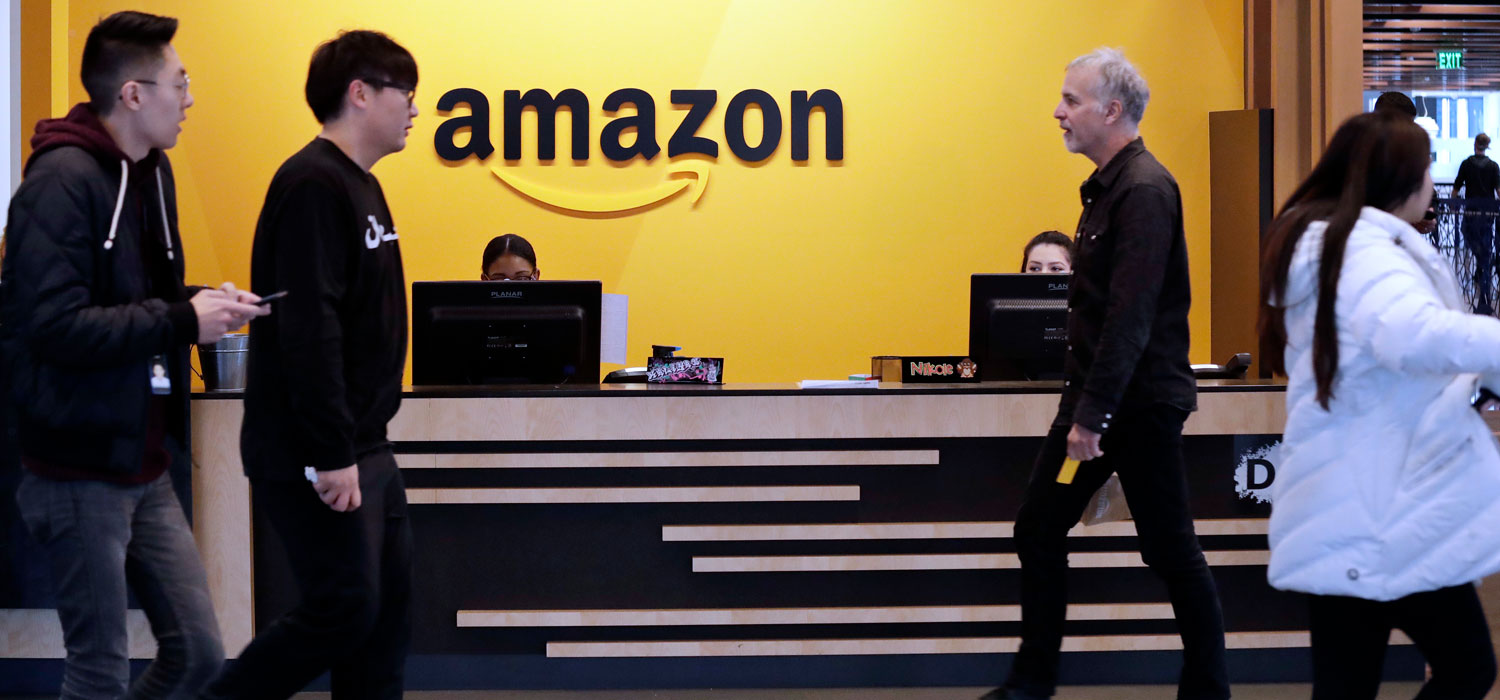
<p>Employees walk through a lobby at Amazon's headquarters Tuesday, Nov. 13, 2018, in Seattle. Amazon. The online shopping giant ended its 14-month-long competition for a second headquarters Tuesday by selecting New York and Arlington, Va., as the joint winners. Photo by Elaine Thompson/AP</p>
In the much-awaited conclusion to the frenzied competition for Amazon’s HQ2 site, Amazon announced on November 13 that it will build new corporate headquarters in Long Island City, New York, and Arlington, Virginia. With billions of dollars forthcoming in incentives, Amazon acknowledged that economic incentives were a factor in its decision but also that “attracting top talent was the leading driver.”
While Amazon’s move has sparked debate, the migration of firms and their corresponding jobs is seen as a barometer of business climate and economic health. State and local governments feel the pressure to retain and attract new jobs by preparing elaborate spending packages that give them a competitive edge over others.
This competition is predicated on local policymakers’ beliefs that businesses are mobile; that they decide where to move, at least in part, on incentives; and that exits affect local economies.
But how mobile are firms, anyway?
Our study of six metropolitan areas over a 20-year period explores this question. The evidence we present does not reflect well on a motive for incentives, especially if eligibility and accountability standards in incentive agreements do not address requirements for new jobs (and penalties for lack thereof).
What drives local employment?

Changes in the number of jobs in a county or metropolitan area because of net migration were essentially zero, when viewed as a share of all area jobs. Net job creation (from establishment births minus deaths) and net job growth (from establishment expansions minus contractions) drove the largest employment changes.
Which firms move?
Larger establishments are slightly more likely to move than smaller ones, and establishments in professional and scientific services or manufacturing industrial sectors were more likely to move than others. This suggests why state and local officials may feel more motivated to respond to strategic businesses departing, even if moves in and out offset each other.
Where do firms move?

Most intercounty job migration occurred within establishments’ metropolitan areas or states, and this was consistent over time. This suggests, perhaps unsurprisingly, that firms may want to retain their incumbent workforces and proximity to existing suppliers and customers.
Furthermore, median household income of counties was not correlated with higher net migration.
What is the price to pay for generous incentives?
Across the US, economic development incentives have become popular political tools. But the asymmetry of information between governments, voters, and firms can mask long-term fiscal costs. States with more investment incentives rely on regressive sales taxes and cuts to public services, which lead to greater economic inequality. Furthermore, incentives subsidize job poaching across neighboring cities or counties, fostering distrust and competition that presents no net benefits.
Job generation from migration is a small share of all local employment changes. This should leave economic development agencies, politicians, and residents more skeptical of attracting firms and using incentives to boost economic activity.
Let’s build a future where everyone, everywhere has the opportunity and power to thrive
Urban is more determined than ever to partner with changemakers to unlock opportunities that give people across the country a fair shot at reaching their fullest potential. Invest in Urban to power this type of work.